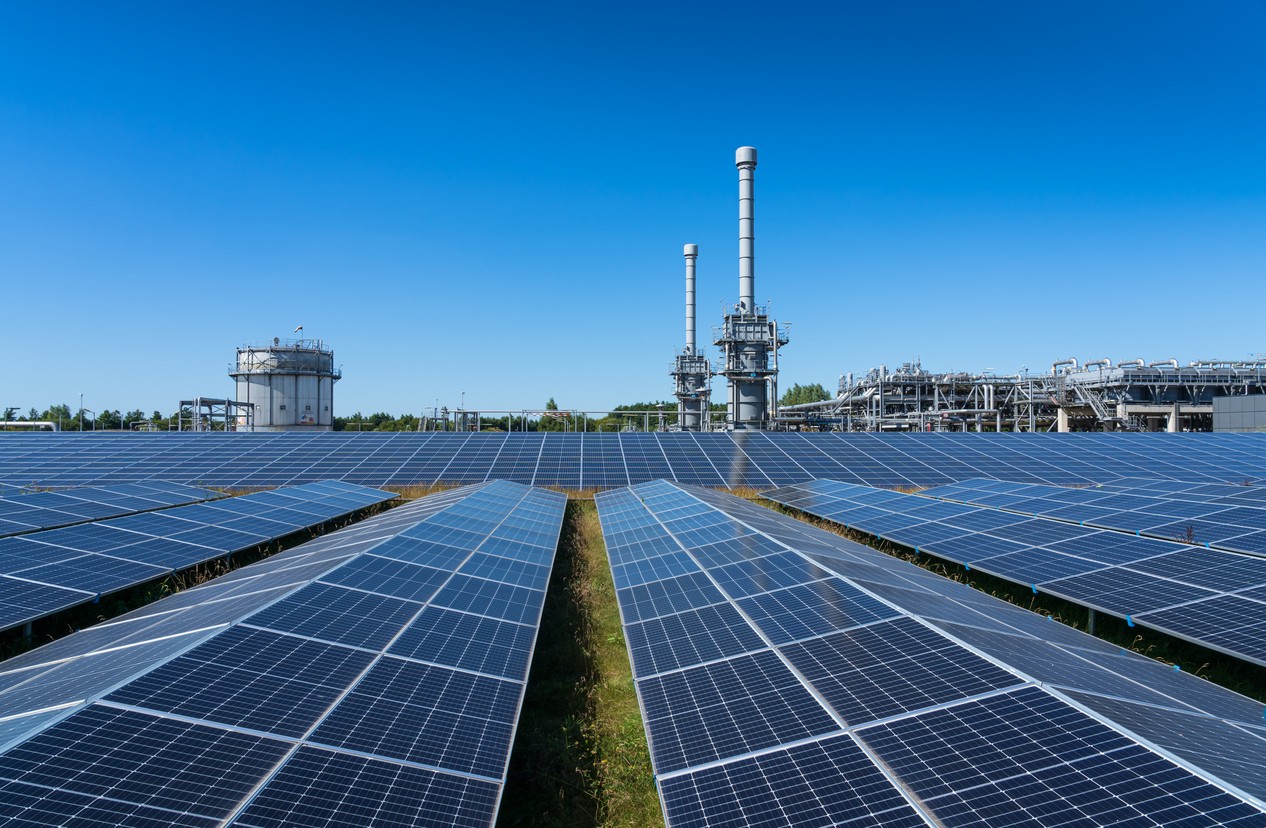
The country has seen rapid commercial and industrial growth over the decades. Amidst this, the one thing that bothers many industrial owners is the costly power bills. To use a better alternative solution for this, many industries including paper, cement, textile, chemical, and other sectors have started deploying industrial solar power systems.
As per the latest survey of the Solar Energy Industries Association, the number of businesses and companies installing commercial solar power systems at their facilities is significantly increasing each year. Enterprises that already use commercial-grade solar panels are focusing to add even more solar arrays to reduce overhead on their energy costs.
However, before you turn to this cost-effective and efficient alternative for your business, it is crucial to understand the solar array your industrial plant needs. It will help you invest in a solar array that is most productive for your industry
An Overview of Solar Arrays
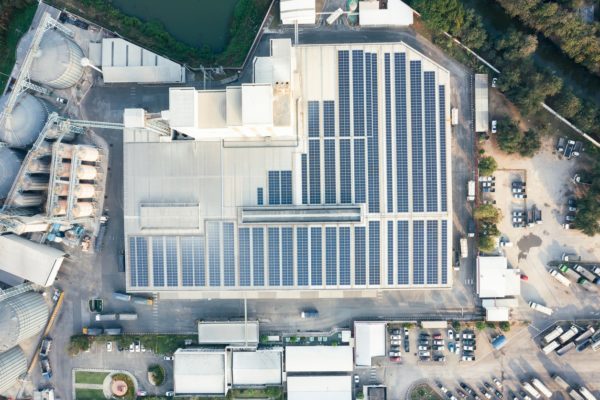
The solar array is typically the most important part of commercial solar panels. It attaches all the panels in the commercial solar system where the sun’s rays are collected and converted into electricity. In other words, a solar array is an assortment of many solar panels generating electricity as a unified system.
When a solar panel installer refers to a solar array, it means a full solar photovoltaic (or PV) system, which includes the solar panels and their placement. Remember that sunlight has to reach the photovoltaic cells in your solar panels to produce solar energy.
A solar power system creates direct current electricity when sun rays cause the electron to move. The inverter or inverters connected to your array transform the direct current (DC) electricity the solar cells produce in the panels into alternating current electricity.
What Kind of Solar Array is Needed to Power an Industrial Plant
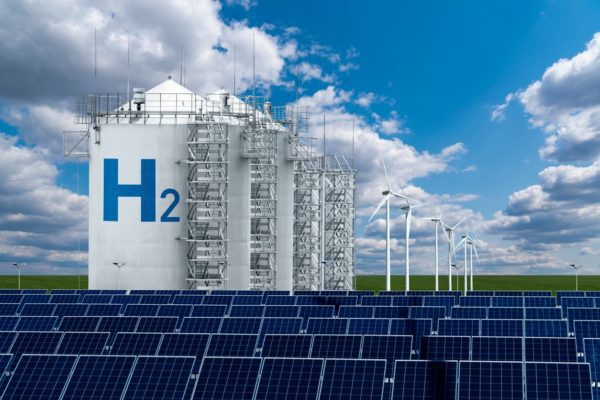
The size and type of solar array needed to power an industrial plant depend on several factors, such as the plant’s energy consumption, the amount of sunlight available at the location, the space available for the installation, and the budget.
Generally, a large commercial or industrial solar array will typically consist of photovoltaic (PV) panels, a solar inverter, and a tracking system to securely mount the panels. To determine the specific requirements, a comprehensive energy audit and site assessment would be needed to estimate the size of the solar array and any additional components such as energy storage systems.
You need commercial arrays larger in length and size than residential solar arrays to power the industrial plants. Most commercial projects require larger panels with more cells because there is more rooftop space and greater electricity needs.
Commercial rooftops of industrial plants commonly use a non-penetrating, ballasted mounting solution because they are normally flat. This typically facilitates the installation process. The project takes longer because the solar array has more panels than a residential array.
Commercial solar panels in a single solar array often have 92 cells each, which makes them 12” wider than residential panels, which on average have 72 cells each. As industrial plants have larger rooftop space and significant size and usability differences, solar array produces enough energy to power the commercial building or facilities.
The amount of electricity produced increases with the number of cells. This is essential because commercial buildings require more electricity than average homes to serve customers and run more equipment.
Most residential designs use appealing, low-profile narrow black solar panels; however, commercial facilities are stark, obtrusive, and visible. This is generally not a problem for industries because most commercial rooftops are hidden.
Factors Affecting Solar Array Models for Commercial Use
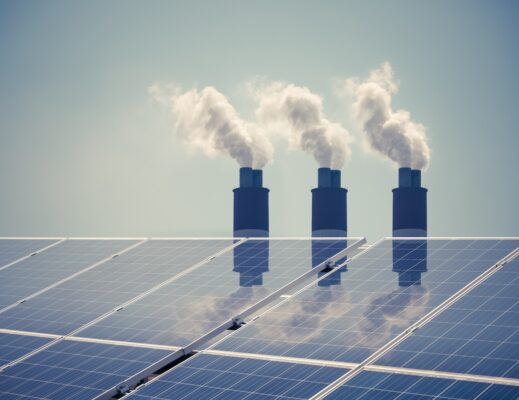
One of the key factors that can impact commercial solar array efficiency is its ability to withstand heat. This is calculated using the temperature coefficient of the array or the output reduction for each degree of temperature rise. With a maximum output loss of 0.2 percent compared to crystalline panels, solar arrays with thin film panels excel in this area.
Another important consideration is weather resistance. Hail protection is especially crucial for your industrial plant in the colder climate. A solar array made of thin-film panels is exposed to hail damage, while crystalline panels are often more robust. You also need to sufficiently understand light-induced deterioration when choosing a solar array to power an industrial plant.
Due to oxygen from the manufacturing process, this condition causes a brief performance decline during the initial hours of sunlight exposure. Generally, it can cause 1 percent to 3 percent output loss.
Maximum Purchasing Power
The daytime, when utility rates are at their highest, is typically when commercial energy consumption is highest. Additionally, this is the time of day when solar array produces the highest amount of electricity. Commercial arrays can reduce their utility costs more than residential projects that utilize electricity in the evening and at night.
Great Effectiveness
Since commercial solar panels are larger compared to residential ones, they are more effective at producing electricity. They have a 20% efficiency rating, which is 2% higher than what their residential equivalents achieve.
Recently, Panasonic unveiled what it claimed to be the world’s most potent photovoltaic panel in 2016. The panel claims an efficiency of 23.8%.
Benefits of Commercial Solar Array for Industrial Plant
Many major corporations in the U.S. and worldwide, including IKEA, Walmart, FedEx, Costco, Verizon, and Apple, are embracing solar in a big manner. The primary motivation for this switch to sustainable energy is cost reduction and improving their bottom line.
The commercial solar system is also a forward-thinking and environmentally friendly option. Solar energy benefits the environment, business, and a company’s reputation.
The surge in the business sector parallels the general rise in solar options, according to the Solar Energy Industries Association’s 2018 Solar Means Business study. Here are some of the benefits of using a commercial solar array.
1. Financial Power than Traditional Power
As said above, the electricity demands of industrial plants are higher as they have to run the operations. It builds up in the high payment bills. When you choose commercial solar for your industrial plant, the Sun generates most of the electricity. It can help you reduce electricity bills and expands your net profit.
2. Reduced Carbon Footprint
In contrast to businesses that rely on fossil fuels, the solar energy sector does not produce carbon emissions or air pollution. It generates no waste materials such as ashes and only utilizes sunlight as an input.
3. No Ground Space Needed
The availability of ground space is typically fine because a solar array for the industrial plant can also be put on the rooftop. Due to its adaptability in installation, solar rooftop energy for the industry is a viable substitute for the high electricity demand.
4. Fixed-Cost and Low-Maintenance Solution
Since solar panels can last up to 25 to 30 years, the solar energy sector provides a fixed-cost alternative. An industrial solar system also requires little maintenance.
5. High ROI
The solar energy industry offers a fixed-cost alternative because solar panels have a lifespan of up to 25 to 30 years. The maintenance needed for an industrial solar system is very minimal.
6. Tax Credit
Through suitable depreciation, capital subsidies, and other financial incentives, the businesses that own private industrial solar power plants can also gain significantly from tax breaks.
Do California Laws Favor Solar Array for Industrial Plants
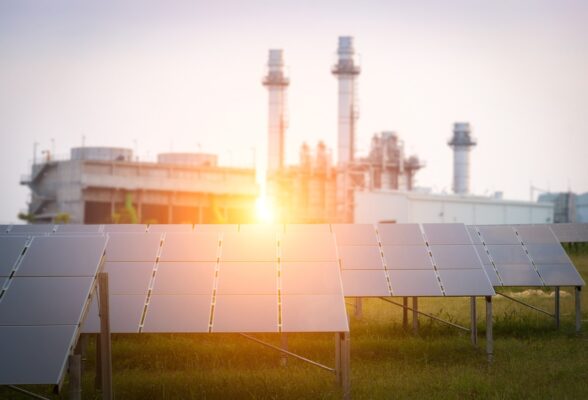
In terms of renewable energy, California is one of the States that have always been at the forefront. They enacted Assembly Bill 2054 in 2016, which mandates that by 2020, all commercial buildings must have solar panel roofs covering 15% or less of their total roof surface.
Many industries in California have already installed a commercial solar system to benefit from commercial solar energy savings. It is a great way to save money; reduce electricity costs and PG&E credits. Over time, these savings build up to a phenomenal return on investment.
You can easily see a payback within five years, depending on your industrial plant’s electricity use each month. If you’re planning to launch a business in California, you need to ensure that your roof space is prepared for the solar array.
Why Commercial Solar Array is Ideal for Industrial Plants
A warehouse or factory roof is the ideal setting for a solar system. These roofs often have lots of space for installing solar panels and are big and flat. They are elevated enough from the ground to get direct sunlight. The kind of solar array you install in the industrial plant can offset energy expenses and offer a quick return on investment if it has a big coverage area.
Installing Multiple Solar Arrays in Industrial Plants
Your installer will advise installing a solar panel system consisting of several connected arrays that provide electricity to a single meter. However, because of the additional effort needed to install those, installing several arrays may increase the installation cost.
Consider using micro-inverters or power optimizers for your inverter solution if you install many arrays facing various directions. Also called module-level power electronics, power optimizers, and micro-inverters improve the electricity production of each panel in complex solar panel systems.
With a typical central string inverter, on the other hand, a poorly performing panel can affect the output of the panels attached to the same circuit.
Coldwell Solar Has Your Commercial Solar Power Solution
Coldwell Solar specializes in installing solar panels for various organizations and companies. It creates a unique solution that satisfies all your criteria and gets it deployed quickly and affordably.
You can rely on Coldwell Solar engineers and installers to provide a faultless solar solution to save your factory or warehouse net profit and helps to create a healthier environment because they are one of the best California-accredited commercial and industrial solar companies.

